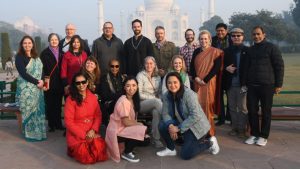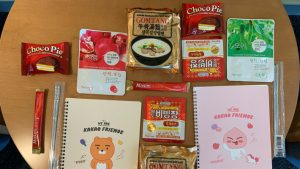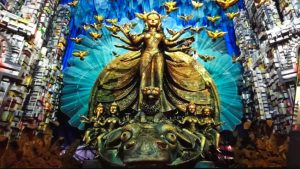Not asthma and not the flu could keep Rome study-abroad participant Carolina Garcia down. In fact, she was up—to the very top of the dome of St. Peter’s Cathedral.
“It was the last day of my first study abroad, and I didn’t want to miss this experience,” said Garcia, an accounting major who works in the accounting office and the spa at Trump International Sonesta Beach Resort. “We took an elevator halfway and then climbed the remaining 220 narrow, twisting steps.”
The sight may have been the highpoint—literally—of a trip that took fifteen students—under the guidance of Randall Martin, faculty director of the study-abroad programs and a member of the Department of Management and International Business in the College of Business Administration—to Rome from December 27, 2006 through January 6, 2007. The trips are offered through the Center for International Business Education and Research (CIBER).
Martin always tries to secure accommodations in a convenient location, and this year’s was ideal.
“We were just three blocks from the Vatican, so we couldn’t get lost,” said Kristina Hernandez, an international relations major and secretary in the modern languages department at Florida International University, also on her first study-abroad trip. “We saw the Sistine Ceiling, the Pantheon, the Coliseum, the Forum, and many paintings. Since I have taken art history courses, I was able to explain the significance of what we were seeing to my classmates.”
Although touring plays an essential role in the programs—this group saw not only Rome but also had a quick side trip to Florence—the students also spent part of each day in coursework. In addition, the trips always include interaction with local businesses. This time, participants discovered how retail works in Italy.
“They don’t have large malls in Italy and have few chains, so we went up and down the streets to see the many small boutique shops and restaurants with their highly specialized stock, such as one with men’s shirts only, another with fruits and vegetables, and another one with lasagna and salad,” Martin said. “The interiors might be ten feet by six feet and feel crowded with four customers. But when you put a shop in 500-year-old surroundings, you don’t need anything else to attract people, and the Italians have a long history of supporting small tradesmen.”
Even beyond the carefully planned educational aspects built into the study-abroad programs, the students always take away more.
“I am eager to travel again,” said Hernandez, who admitted to having a very hard adjustment on her first time away from her family. “Some of us got very close, and since being back, we’ve gone out together every night and may go on another trip together soon.”
“I came back with ten new friends,” Garcia said. “I also came back with a big learning: in order to do business with people from other cultures, you have to respect their cultures. Business is global, so you have to communicate with people in a mixed group—such as ours, in which we all had different beliefs and cultures. The same will be true in business.”
Despite the costs brought on by higher fuel prices and the weakened dollar, the popularity of the study-abroad programs is growing. According to Martin, the trip to Paris, scheduled for March 16-25, 2007, and which can accommodate 25 students, filled up almost immediately when it was announced in January, 2007.




